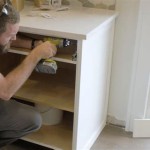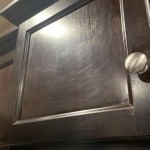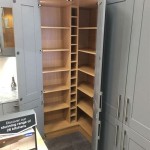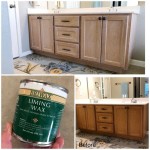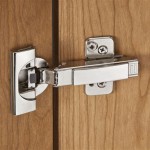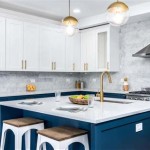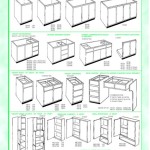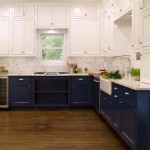Painted Kitchen Cabinet Color Ideas: A Comprehensive Guide
The kitchen serves as a focal point within the home, often acting as a gathering place and a center for activity. Consequently, the aesthetics of the kitchen, particularly the cabinetry, significantly impact the overall ambiance and perceived value of the property. Painting kitchen cabinets represents a cost-effective method for transforming the space, allowing homeowners to update the style without undertaking a full-scale renovation. Selecting the appropriate color proves crucial for achieving the desired effect, requiring careful consideration of various factors, including kitchen size, lighting, existing décor, and personal preferences.
This article provides a comprehensive overview of painted kitchen cabinet color ideas, exploring various options and offering insights into choosing the most suitable colors for different kitchen styles and personal tastes. It will delve into the nuances of color psychology, discuss trends, and offer practical advice to assist in making informed decisions.
Understanding the Basics of Color and its Impact
Color fundamentally affects the perception of space and evokes distinct emotional responses. In the context of kitchen design, understanding these effects proves vital. Light colors, such as white and light gray, create an illusion of spaciousness, making them ideal for smaller kitchens or those with limited natural light. Conversely, darker colors, such as deep blues and greens, can introduce a sense of drama and sophistication, but they may not be suitable for smaller spaces as they can visually shrink the room. The intensity of a color also plays a significant role. Bright, saturated colors can add energy and vibrancy, while muted, desaturated colors create a calming and serene atmosphere.
The existing elements within the kitchen, such as countertops, flooring, and backsplash, must be considered when selecting cabinet colors. The chosen cabinet color should complement these existing features, creating a cohesive and harmonious design. For instance, if the countertops feature warm tones such as granite or marble with brown or beige undertones, choosing cabinet colors with warm undertones, such as creamy whites or earthy greens, can create a visually pleasing effect. Conversely, if the countertops feature cool tones like gray or white quartz, selecting cabinet colors with cool undertones, such as light blues or grays, can enhance the overall aesthetic.
Natural and artificial lighting significantly influence how colors appear. In kitchens with ample natural light, colors tend to appear brighter and more vibrant. However, in kitchens with limited natural light, colors may appear darker and more muted. It is advisable to test paint samples in the kitchen to assess how they look under different lighting conditions throughout the day. Consider the type of light bulbs used in the kitchen, as warm-toned light bulbs can cast a yellow hue, while cool-toned light bulbs can cast a blue hue, both of which can affect the perceived color of the cabinets. Color samples should be observed both during the day and at night to ensure the chosen color remains aesthetically pleasing under all lighting conditions.
Exploring Popular and Trending Color Palettes
The landscape of kitchen cabinet color trends constantly evolves, reflecting changing design preferences and cultural influences. However, some colors remain consistently popular due to their versatility and timeless appeal. Neutral colors continue to be a mainstay in kitchen design for their ability to adapt to various styles and create a sense of calm and sophistication.
White: White cabinets offer a clean, timeless look that brightens the kitchen and creates a sense of spaciousness. White cabinets are highly versatile and can be paired with a wide range of countertop materials, backsplash designs, and hardware finishes. Different shades of white, such as bright white, off-white, and antique white, offer varying degrees of warmth and character. Bright white creates a crisp, modern look, while off-white offers a softer, more traditional feel. Antique white, with its subtle yellow undertones, lends a vintage, farmhouse-inspired aesthetic.
Gray: Gray cabinets have emerged as a sophisticated alternative to white, offering a neutral backdrop that complements both modern and traditional designs. Gray cabinets can range from light, airy shades to deep, charcoal tones, providing options for various kitchen sizes and styles. Light gray cabinets create a calming, understated elegance, while darker gray cabinets introduce a touch of drama and sophistication. Gray cabinets pair well with stainless steel appliances, white countertops, and natural wood accents.
Blue: Blue cabinets are gaining popularity for their calming and sophisticated presence. Navy blue, in particular, adds a touch of elegance and drama to the kitchen, while lighter shades of blue evoke a coastal or farmhouse feel. Blue cabinets work well in kitchens with white or gray countertops and stainless-steel appliances. Pairing blue cabinets with brass or gold hardware can add a touch of luxury and warmth. Different shades of blue can create different effects. A bright, cheerful blue can add a pop of color and energy to the kitchen, while a muted, dusty blue can create a more relaxed and serene atmosphere.
Green: Green cabinets are becoming increasingly popular as homeowners seek to connect with nature and bring a sense of tranquility into their homes. Green cabinets can range from soft sage greens to deep forest greens, offering a variety of options for different kitchen styles. Sage green creates a calming and organic feel, while forest green adds a touch of richness and sophistication. Green cabinets pair well with natural wood countertops, copper hardware, and rustic accents. Earthy greens work well in farmhouse-style kitchens, while bolder greens can add a modern touch to contemporary designs.
Beyond these classic choices, bolder and more unconventional colors are also gaining traction. Jewel tones, such as emerald green, sapphire blue, and ruby red, can add a touch of luxury and drama to the kitchen. These colors work best in larger kitchens with ample natural light, as they can visually overwhelm smaller spaces. Two-toned kitchen cabinets, where the upper and lower cabinets are painted in different colors, are also a popular trend. This can add visual interest and depth to the kitchen, allowing homeowners to express their personal style. For example, pairing white upper cabinets with navy blue lower cabinets creates a classic and sophisticated look.
Practical Considerations for Choosing and Applying Cabinet Paint
Selecting the right color represents only the first step in achieving a successful cabinet painting project. Choosing the appropriate type of paint and employing proper painting techniques are essential for ensuring a durable and aesthetically pleasing finish.
Paint Type: The type of paint used significantly impacts the durability and appearance of the finished cabinets. Oil-based paints offer excellent durability and a smooth, glossy finish, but they require longer drying times and can be more challenging to clean up. Latex paints, on the other hand, are easier to work with, dry quickly, and are low in VOCs (volatile organic compounds). However, they may not be as durable as oil-based paints. Acrylic latex paints offer a good compromise between durability and ease of use, making them a popular choice for kitchen cabinets. Consider using a paint specifically formulated for cabinets and trim, as these paints typically offer better adhesion and resistance to chipping and scratching.
Surface Preparation: Proper surface preparation is crucial for achieving a smooth and long-lasting paint finish. Begin by thoroughly cleaning the cabinets to remove any grease, dirt, or grime. Use a degreasing cleaner specifically designed for kitchen cabinets. Next, sand the cabinets lightly to create a smooth surface for the paint to adhere to. Remove any loose paint or varnish. If the cabinets have a glossy finish, sanding is essential to roughen the surface and provide a better grip for the paint. Finally, apply a primer to the cabinets to seal the surface and promote adhesion. Choose a primer that is compatible with the type of paint you are using. Tinting the primer to a similar color as the paint can improve coverage and reduce the number of coats needed.
Application Techniques: The method of paint application can significantly impact the final appearance of the cabinets. Using a high-quality brush or roller designed for smooth surfaces is essential for achieving a professional-looking finish. Avoid using cheap brushes or rollers, as they can leave brush marks or uneven textures. Apply the paint in thin, even coats, allowing each coat to dry completely before applying the next. Avoid applying too much paint at once, as this can lead to drips and runs. If using a paint sprayer, be sure to properly mask off the surrounding areas to prevent overspray. Adjust the sprayer settings to achieve a fine, even mist. Practice on a piece of cardboard before spraying the cabinets to get a feel for the sprayer and the paint flow. Multiple thin coats are always better than one thick coat.
Hardware Considerations: The hardware chosen for the cabinets can significantly impact the overall aesthetic. Consider updating the hardware to complement the new cabinet color. For example, pairing sleek, modern hardware with gray cabinets can create a contemporary look, while pairing antique brass hardware with white cabinets can create a more traditional feel. Choose hardware that is durable and easy to clean. Consider the size and scale of the hardware in relation to the cabinets. Too small hardware can look insignificant, while too large hardware can overwhelm the cabinets. When replacing hardware, be sure to fill any existing holes with wood filler and sand them smooth before painting. Consider the existing hole spacing when choosing new hardware to avoid having to drill new holes. Different finishes, such as brushed nickel, polished chrome, and oil-rubbed bronze, can create different effects. Choose a finish that complements the overall kitchen design.
By carefully considering these factors, homeowners can effectively transform their kitchens through the strategic use of painted cabinet colors, creating a space that reflects their personal style and enhances the overall value of their homes. The key lies in understanding the fundamentals of color, exploring the current trends, and applying meticulous painting techniques.

How To Choose Kitchen Cabinet Paint Colors
:strip_icc()/painted-kitchen-cabinet-ideas-20-becca-interiors-southampton-0b04a571a07649deb33edae1e89d9c41.jpeg?strip=all)
29 Painted Kitchen Cabinet Ideas You Can Easily Copy

Two Color Kitchen Cabinets Ideas And Exact Paint Matches Painted Colors Cabinet Modern White

How To Paint Kitchen Cabinets

Most Popular Cabinet Paint Colors Taupe Kitchen Cabinets New

38 Popular Colors To Paint Kitchen Cabinets Amber Oliver

21 Amazing Ideas For Kitchen Cabinet Paint Colors

Kitchen Cabinet Paint Ideas

30 Best Kitchen Color Ideas And Combinations 2024

14 Kitchen Cabinet Color Combinations To Try
Related Posts

